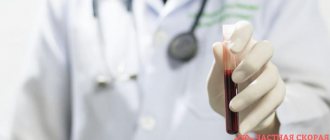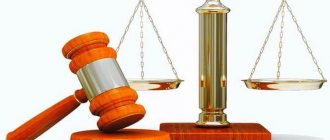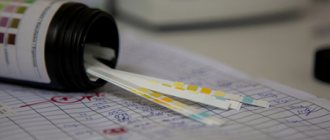Despite the fact that Russians are quite homogeneous in their genetics and anthropometry, people living in different regions of Russia still differ slightly from each other, which with a high degree of probability makes it possible to determine where their ancestors used to live.
The anthropological expedition of Soviet scientists under the leadership of Viktor Valerianovich Bunak was ahead of several main types of Russians: these are Russians of the central type living in Moscow, in the Moskovsky district, slightly south and northeast of the capital; Russians of the Klyazma type (Vladimir); Western Upper Volga type (from Tver to Yaroslavl); Eastern Upper Volga type (from Kostroma to Nizhny Novgorod); Ilmen-Belozersky type (from the upper reaches of the Mologa River to the Baltic coast); Lovat-Sora type of Russians (upper reaches of the Lovat and Sora rivers); Vologda-Vyatka (respectively from Vologda to Vyatka and north); Vyatka-Kama type; Don-Sur type (territories including Ryazan, the upper reaches of the Volga and Sura); Upper Oka type of Russians (live from Smolensk, Kaluga and Tula in the north to Bryansk in the west and Kursk in the south); steppe type (live in the upper reaches of the Don and in the middle reaches of the Khoper River, Voronezh, Lipetsk); Middle Volga type of Russians (lives on the western bank of the Volga, opposite Saratov).
Valdai type (occupies lands from Torzhok to Vyazma and westward, to Belarusian Vitebsk) and North Arkhangelsk type (Akhrangelsk region).
In the north - Nordids
To determine the anthropometric characteristics of each type of Russian, Soviet scientists studied at least 250 people in each group.
It turned out that the Ilmen-Belozersky type is distinguished by tall stature, blond hair and a narrow face. More than 70% of the population have gray, blue or green eyes; only 1% of Russians have dark eye pigment. The average height of residents of Novgorod and Pskov is 167 cm, which is on average higher than in other regions of the country.
In terms of phenotype, the inhabitants of the Baltic are close to the Nordic peoples; their lips are of average thickness - about 16 mm; 85% of them have a sweet upper eyelid. The nose, as a rule, is narrow and long, in a third of the population its base is slightly raised, and only 9% of local residents have duck noses, the rest are straight, the beard of local men is quite rare.
The Lovat-Sor group of Russians living further south can be distinguished from their northern neighbors by the following characteristics: they have darker hair, smoother eyelids - the fold of the upper eyelid is found here in only 5% of the population. But local residents have a very wide face - the average width is 142 mm.
Residents of the Arkhangelsk region have a low nose bridge, a wider and at the same time very protruding nose, thick lips, more than half of them have blond hair and light eyes, and a sparse beard. Among them, more often than among other types of Russians, there are people with a concave bridge of the nose (16%), and almost a quarter have a massive base of the nose.
What is nationality anyway?
The term “nationality” itself has two meanings. It implies both attitude to a particular ethnic group and citizenship.
When we talk about national character, we mean stereotypes that have been formed over the years. For example, the British are prim and cold, the Japanese are polite and hardworking, the Spaniards are temperamental, etc.
Of course, one test does not determine nationality, because there are a great many of them in the world.
Therefore, for simplicity and quick completion of the test, we use conditional nationalities that are responsible for certain parts of the world:
- Africa;
- Europe;
- Asia;
- Australia;
- USA;
- Latin America.
Since test takers often have difficulty choosing one of the options - well, none of them fit and that's it - the test offers another large group: multinationality.
Test: Are you cheerful?
Agree, there is a decent selection to make everyone happy.
The further south you go, the darker your hair
Residents of Valdai and the Upper Dnieper (Valdai-Upper Dnieper type) are distinguished by a round head, a narrow long nose, 80% of the population have broad faces, and a fold on the eyelid. Half of them are fair-haired, and 41% are light-eyed. Men's beards are not very thick.
Residents of cities such as Bely, Ostrov, Velizh, Velikiye Luki, Opochka have a round head, a round and wide face, the average height of which to the eyebrows is 124 mm, and the width is 141 mm. In other Valdai districts, the faces of residents are more elongated - 127.1 mm. Some Upper Volga residents have a thick beard.
The Western Upper Volga type of Russians has its own characteristics: the inhabitants of the region are similar to their northern neighbors, but even more nosey; Moreover, their noses, as a rule, are straight, and those who live to the north have long noses (they are shorter among southerners).
From the Itelmen-Belozersky type, the Upper Volga people, as well as the Lovat-Sorets, differ in darker hair pigmentation and smoother eyelids, and local men have the thickest beards.
Tests for nationality and race
- Tests
- Tests for nationality and race
Using a nationality test, you can identify your belonging to a certain category of people.
A person does not always know his personal roots; perhaps, growing up in an orphanage, his parents did not talk about his ancestors. People often suspect that they do not belong to the nationality indicated in their passport, and they do not know how to identify their true roots. You can, of course, take a DNA test or ask friends and elders who can tell you about distant relatives, but this is long and painstaking. Often there is no time or no desire to do this, because we have lived for so many years without any evidence. But a test for nationality based on appearance, surname, character can be passed quickly, and at the same time receiving a comprehensive result. Sometimes even appearance does not distinguish a person from others, but temperament and violent disposition take their toll. Here we can say that in every country, city, town, there are such people, and their character does not depend on ethnic identity. There is some truth in this, but most still understand why they look different, have curly hair or other features, so they want to find out their true origin.
Nationality test based on a person's appearance
Number of passes: 5456 909 44
If you have an unusual appearance, even if it is not much different from those around you, and you suspect that you have a different origin, take a nationality test based on your appearance, it will refute or confirm your guesses.
What nationality were you in a previous life?
Number of passes: 5456 909 44
Often, people’s subconscious is influenced by their mission from a past life, although it sounds like fiction, it happens. Test: What nationality were you in a past life will reveal to you the secret of some of your actions.
Nationality test based on a person’s photo
Number of passes: 4836 806 39
To recognize race, there are services that allow you to upload photos, but we suggest taking a nationality test using a photo description, which will reveal your knowledge in this matter. As a result, you will receive an answer whether you have correctly identified a particular nationality.
Nationality test based on human character
Number of passes: 5456 909 44
Each individual has his own characteristics, but there are characteristics inherent to a particular nationality. The nationality character test will identify you to a certain nation based on your qualities.
Nationality test based on a person's face
Number of passes: 4464 744 36
Standard tests for nationality based on the face require uploading a photo, after which they give the result. We invite you to answer questions based on which you can understand how much you know other nationalities.
Are you racist and to what extent?
Number of passes: 3224 537 26
People have different attitudes towards representatives of other nationalities; the Are You Racist test will determine your view, and will also reveal the degree of your disdain for a person with a different skin tone than your relatives.
Who are you in terms of mentality and worldview?
Number of passes: 4588 765 37
The ability to think, reason, and express oneself is different for everyone. But there are certain signs for each region. So, for example, Russians may not understand the humor of the British and vice versa. Find out what kind of mentality you are; the test will answer this question based on the options you choose.
Online test for nationalism
Number of passes: 3224 537 26
By taking an online test for nationalism, you will understand how much you love your region, your country. For some, worries about the Motherland are alien, others are concerned about their financial situation, but there are also those who are extremely devoted to their Fatherland.
Online test Nationality by last name
Number of passes: 4588 765 37
Nations exhibit peculiarities in appearance and character, and each one is distinguished by the specificity of their surnames. Try to determine your nationality by last name, the online test will help with this, take it and get the result.
How to recognize your roots by appearance and other aggregate characteristics?
Number of passes: 8060 1343 65
The test, How to find out your roots by appearance, will make it possible to determine your true roots using some cumulative marks inherent in a particular nation, ethnic group, or continental zone.
Where did you come from?
Number of passes: 2604 434 21
Do you like to copy the movements that other people do?
Full southern lips
Residents of Don and Sura (Don-Sura type) can be identified by a narrow face, a head of medium roundness, a narrow straight nose, full lips (average thickness 17 mm), short stature, dark hair, light eyes and the absence of a crease on the eyelid (the number of people with smooth eyelids here reaches 30%).
People from Lipetsk and Voronezh (steppe type) can be distinguished from others by their medium-round head, narrow nose, full lips, thick beard and predominantly (70%) dark hair and dark (58%) eyes. Middle Volga residents are characterized by a potato nose with a narrow bridge, dark hair and rather plump lips.
How to determine a person's ethnicity
A modern, accurate and reliable method of DNA testing allows you to get answers to a number of questions related to the genealogy of a person and his belonging to a particular ethnic group. During the process of evolution, various mutations accumulated in the human genome and were passed on from generation to generation. As a result, each nationality has characteristic genetic markers that determine skin color, eye shape and other appearance features.
A special study of DNA fragments allows us to determine the ethnicity of a particular person and his genetic history. Today, four special groups of populations are used for this:
- European – includes countries of Europe and the Middle East.
- East Asian - South and North Korea, Japan, China.
- Southeast - Australia and Oceania, Philippines.
- African – Libya, Egypt, etc.
To determine the percentage of each group in the human genome, 175 SNP markers are used on all chromosomes. Alleles that are determined by these markers correspond to a specific group. As a result, the proportion of a person’s ancestors from a certain corner of the globe is established. For example, the person being studied may have 15% of his relatives from the southeastern group and 80% from the African group.
Vologda residents are broad-faced, and Kama residents are flat-faced
The Vologda-Vyatka type is distinguished by a very wide (142.2 mm) face, round head, narrow nose, plump lips; Only a little more than a third of the population has blond hair and light eyes. And the Vyatka-Kama type is characterized by a flat face (the horizontal profiling indicator reaches 1, while among the closest neighbors - Vologda residents, this indicator is 10, and among the inhabitants of the Baltic - 11.
Often found in the Vyatka-Kama region is the “duck” or “potato” nose, but there are also straight noses.
People's nationality
The people are the smallest unit in today’s discussion; you can literally take this word as a clan, a family. In the course of their development, families (tribes) grew, separated, and united with neighbors. But since they had common roots, and life passed in interaction with each other, in territorial proximity, common, similar traits gradually formed, so strong genetically that they were passed on to descendants regardless of time and distance - the nationality of peoples or folk nationality.
So, if you look at the Germans, for example: non-Saxon Germans, Franconians, Saxons, Swabians, Bavarians - that’s how many subethnic groups (peoples) belong to one nationality of people.
Russians have about thirty throughout Russia and beyond. And there are only two dialects - Northern Russian (okaya) and South Russian (akay).
Residents of the center
Residents of Vladimir and the banks of the Klyazma are tall (average height reaches 168 cm), full lips (16.7 m), they are round-headed, the vast majority are dark-haired and dark-eyed, 80% of the population have a fold in the upper eyelid and a very high bridge of the nose.
And the inhabitants of the center of Russia can be identified by their taller stature, dark hair and eyes, a narrow straight nose with a high bridge, thin lips, a wide face and a round head. Only 4% of the local population has a concave nose profile, and 20% have a raised nasal base.
Local men have a fairly sparse beard, and only 30% of the population has blond hair.
Jewish surnames
- Jewish surnames often come from the stems “Levi” and “Cohen” - Levin, Kogan, Katz.
- The second option is to add proper suffixes to male or female names, which is explained by the desire of the ancestors of the current bearers of these surnames to become part of Russian society during the time of Catherine II. For example, Varshavsky, Yakubovich, Lavrov, Levkovich, Shuvalov, Yakobson, Millyar, Beilis, Mandelstam, Varum, Dolin, Linnik, Agutin.
- The third option is standard - profession, personality traits, nickname. Kaplan is the chaplain, the notorious Rabinovich is the rabbi, Stiller is the quiet one.
This is not a complete list of ethnic groups with characteristic family characteristics. However, you have already realized that when you meet a person, you can already understand in the first minutes what his origin is.
DNA genealogy: description and possibilities
The DNA results include information about the ethnicity of people in 350 regions. The ability to obtain data about the ethnic groups from which the subject may descend is due to the presence of the same number of chromosomes in them.
The existence of potential relatives is identified through DNA matching with other people who have taken the test. This is possible because deoxyribonucleic acid, or DNA, contains complete information about several generations of people. DNA displays mutations that allow one genetic lineage to be distinguished from another.
There are three main types of genealogical DNA tests that determine ancestry:
- autosomal - along all branches of the family tree;
- mitochondrial - study of the maternal line for men and women;
- Y test - done for men, determines the direct paternal line.
Genealogical DNA testing does not provide insight into medical conditions, disorders or inherited diseases.
The study allows us to clarify the following aspects:
- genetically close relatives within 5-6 generations;
- percentage of ancestors from different ethnic groups;
- kinship over several decades or centuries;
- assigning a person to a certain race.
Materials for examination
Almost any genetic material is suitable for genealogical DNA research. Typically, an oral swab or scraping of the buccal epithelium is taken for analysis. However, in many laboratories, equipment allows the analysis of genetic material isolated from various parts of the body and objects.
Body parts from which DNA can be isolated and fluids:
- bone;
- nails;
- hair;
- blood;
- sperm;
- earwax.
For a DNA test, you can use personal items or things with remains of vital activity:
- cocktail straws;
- pacifiers;
- cigarette butts;
- chewing gum;
- toothbrush;
- comb;
- razor blade.
The test for nationality can be done non-invasively, so there is no need to damage the skin and there is no risk of infection.
Men will need to submit their own genetic material for a DNA nationality test. Women must also be provided with the father's genetic material.
The video allows you to learn more about DNA genealogy. The video was filmed by the pereformat channel.
National differences of Georgians
Very often, belonging to a particular nationality can be determined by last name. For example, native Georgians have a surname ending in “dze”. Therefore, how to determine nationality by last name is written in the relevant literature. In addition to their surname, Georgians can be distinguished by their light skin, almond-shaped brown or black eyes, an elongated nose with a hump, and thick, pitch-black hair. Representatives of this nationality have a proportional figure; in terms of height, Georgians are usually tall people, and not only men, but also women.










